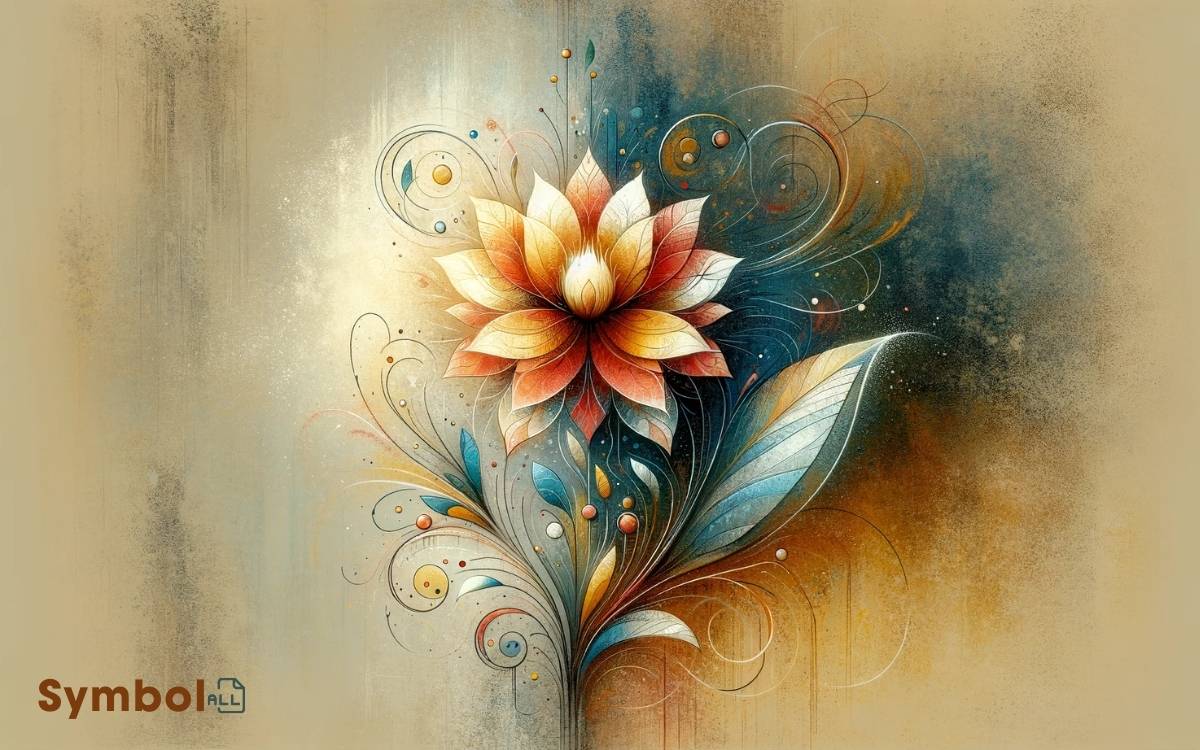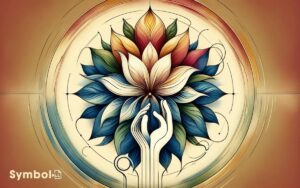What Flower Is Considered an Easter Symbol? Easter Lily!
The Easter Lily, symbolizing purity, hope, and renewal, demands precise cultivation. You’ll need well-drained, slightly acidic soil and a spot with full sun to partial shade. Plant its bulbs 6 inches deep and 12 inches apart.
Fertilize lightly in spring and post-flowering. This lily thrives under specific conditions, celebrating ancient traditions of purity and joy. Its cultivation improved through eras, embracing its global symbol of rebirth today.
Focus on soil pH, light exposure, and watering for best growth. Understanding its historical origins and spiritual significance enriches its cultivation, guiding you toward deeper insights into its cultural significance and gardening intricacies.

Key Takeaways
The Symbolism of Easter Lilies
The Easter Lily, Lilium longiflorum, symbolizes purity, hope, and renewal, reflecting the resurrection story central to the Easter holiday.
You’ll find its cultivation requires well-drained, slightly acidic soil, rich in organic matter. It thrives in full sun to partial shade, needing consistent moisture but not waterlogged conditions.
Planting its bulbs 6 inches deep and about 12 inches apart allows for adequate root expansion and prevents overcrowding, essential for healthy growth.
Fertilize lightly in the spring as growth emerges and again after flowering to encourage bulb strength for the next season. Disease prevention involves ensuring good air circulation around plants and practicing crop rotation if you’re planting in the same area yearly.
Understanding its needs guarantees you’ll successfully cultivate these symbols of hope and renewal in your garden.
Historical Origins
You’ll find that the roots of the Easter lily as a symbol stretch back to ancient celebratory practices.
These practices, rich in botanical and cultural significance, showcase the flower’s evolution in symbolism across different civilizations.
Understanding this historical context not only enriches your appreciation of the Easter lily but also guides its cultivation and care in a modern setting.
Ancient Celebratory Practices
Ancient celebratory practices, deeply rooted in historical origins, reveal that flowers have long served as symbolic elements during Easter festivities. This tradition, emerging from pre-Christian rites, leveraged the natural revival of flora to symbolize rebirth and renewal.
Specifically, the lily, with its pristine white blossoms, has been cultivated over centuries for its association with purity and joy, integral to Easter’s theme.
To guarantee prime growth, these flowers require well-drained soil, moderate sunlight, and regular watering, mirroring the careful attention ancient cultivators paid to their symbolic flora.
Understanding these practices provides insight into the profound relationship between human culture and the natural world, showcasing how botanical elements were meticulously integrated into celebrations to embody deeper spiritual meanings.
Symbolism Evolution
When studying the evolution of symbolism in Easter celebrations, it is important to acknowledge how the lily’s representation of purity and rebirth has deepened over centuries due to its botanical characteristics and cultivation techniques.
| Era | Significance |
|---|---|
| Ancient Times | Represented fertility and renewal |
| Middle Ages | Symbolized purity and divine connection |
| 17th Century | Became associated with Easter celebrations |
| 19th Century | Cultivation techniques improved, symbolizing prosperity |
| Present Day | Embraced globally as a symbol of hope and rebirth |
Understanding the lily’s journey through history enriches your comprehension of its status as an Easter symbol. Focus on its best soil pH, light exposure, and watering regimen to cultivate these symbols of purity in your own garden, thereby continuing a tradition that spans millennia.
Spiritual Significance
You’ll find that the Easter symbol flower embodies themes of resurrection and renewal, reflecting the cyclical nature of life and ecological systems.
Its presence in biblical narratives provides layers of meaning, particularly in passages that underscore its connection to cross symbolism and the overarching narrative of rebirth.
Understanding these connections enriches one’s appreciation for the flower’s role in Easter traditions and its cultivation in diverse environments.
Resurrection and Renewal
In the context of Easter, the symbol of the flower embodies the spiritual themes of resurrection and renewal, reflecting the cyclic nature of life and spiritual awakening.
These themes are deeply embedded in the phenological patterns observed in the natural world, where flora undergoes dormancy and rebirth in alignment with seasonal cycles.
Specifically, Easter flowers, through their blooming cycle, illustrate a profound metaphor for spiritual renewal and the resurrection concept.
To cultivate such symbols in your own space, focus on species that exhibit robust spring growth, ensuring they’re planted in well-drained soil and receive ample sunlight.
Optimal care encourages their rejuvenation each year, serving as a living attestation to the themes of resurrection and renewal inherent in Easter’s celebration.
Biblical References Explained
Building on the metaphor of flowers in Easter celebrations, exploring biblical references reveals deeper layers of spiritual significance tied to these natural symbols.
Scriptures often utilize floral imagery to symbolize concepts such as purity, divine love, and the transient nature of life.
For instance, the lily, frequently mentioned in biblical texts, embodies purity and has been linked to the Virgin Mary, symbolizing her role in the divine narrative.
In cultivating these Easter symbols, one must consider their native habitats and ideal growth conditions.
Lilies, for example, thrive in well-drained soil with ample sunlight, reflecting their need for an environment that fosters growth and purity.
Understanding these requirements not only enhances their physical beauty but deepens their spiritual resonance during Easter observances.
Cross Symbolism Connection
Delving into the cross’s symbolism reveals its profound spiritual significance in Easter celebrations, representing both sacrifice and resurrection.
This emblem, deeply rooted in Christian theology, embodies the crucifixion of Jesus Christ, epitomizing ultimate sacrifice for humanity’s redemption.
Concurrently, it symbolizes the resurrection, a cornerstone of Christian faith, illustrating the triumph over death and the promise of eternal life.
In the context of Easter flowers, particularly the lily, their blooming during this season is emblematic, mirroring the resurrection theme.
Cultivating these symbols in your garden isn’t merely an act of horticulture but a profound reflection on life, death, and rebirth.
Understanding this connection enhances your appreciation for these symbols, enriching your Easter observance with deeper spiritual layers.
Cultural Traditions
Easter’s symbol flower, deeply rooted in cultural traditions, serves as a vivid embodiment of renewal and hope across various societies.
You’ll find that these flowers aren’t just a feast for the eyes but are steeped in rituals and meanings that vary from one culture to another.
- Historical Significance: Many cultures have long associated specific flowers with Easter, imbuing them with religious and historical significance.
- Symbolic Colors: The colors of Easter flowers often carry deep meanings, from purity and peace to joy and rebirth.
- Cultural Variations: Different societies celebrate Easter with various flowers, each adding a unique layer to the holiday’s symbolism.
- Botanical Importance: These flowers often play critical roles in local ecosystems, contributing to biodiversity and the health of their environments.
Understanding these cultural traditions enriches your appreciation for these symbolic blooms.
Gardening Tips
To cultivate Easter symbol flowers successfully, you’ll need to understand their specific soil, light, and watering requirements, ensuring these seasonal blooms thrive in your garden.
For instance, lilies, a quintessential Easter symbol, demand well-drained, slightly acidic soil with ample organic matter to foster robust root systems.
Position them where they’ll receive partial to full sunlight, mimicking their native woodland habitats. Regular, deep watering supports their growth, but avoid waterlogging, as this can lead to root rot.
Implementing a balanced, slow-release fertilizer during planting and at the onset of spring enhances their bloom vitality.
Remember, successful cultivation hinges on replicating the natural conditions these Easter symbols favor, requiring diligent observation and adjustments to cater to their specific needs.
Decorating Ideas
Having mastered the art of cultivating Easter symbol flowers, let’s explore how you can incorporate these vibrant blooms into your home and garden decor to enhance the festive atmosphere.
Utilizing scientific terminology and precise descriptions, consider the following suggestions:
- Centerpieces: Craft visually stimulating arrangements by selecting flowers with complementary chromatic attributes, ensuring they thrive in similar photoperiodic exposures.
- Door Wreaths: Integrate species with high desiccation resistance, crafting a welcoming symbol that retains its aesthetic appeal throughout the season.
- Potted Displays: Opt for cultivars with compact growth habits and extended blooming periods for enduring indoor embellishments.
- Garden Highlights: Employ strategic planting based on phenological cues to achieve a staggered bloom, creating a dynamic and evolving landscape display.
These methods not only beautify your space but also deepen your connection with the natural world during the Easter season.
Varieties and Selection
When choosing Easter symbol flowers, it’s crucial to contemplate species that not only align with your aesthetic preferences but also meet specific horticultural requirements for optimal growth and display.
Lilium longiflorum, commonly known as the Easter Lily, thrives in well-drained, slightly acidic soils, requiring moderate water and partial to full sunlight exposure.
For a vibrant display, contemplate Hyacinthus orientalis, which demands nutrient-rich, moist soils and benefits from bulb chilling prior to planting to stimulate growth.
Azaleas, symbolizing temperance, flourish in dappled shade with acidic, well-aerated soil, necessitating regular watering to maintain soil moisture.
Each variety possesses unique requirements—temperature tolerance, soil pH, light exposure mandating thorough research to make sure your selection not only embellishes your space but also prospers in its environment.
Conclusion
In wrapping up, you’ve journeyed through the rich tapestry of Easter Lilies, from ancient roots to spiritual heights, across cultural landscapes, and into the heart of your garden.
These blossoms aren’t just plants but symbols of renewal, embodying the essence of spring’s rebirth.
As you select and nurture your variety, remember, each petal unfolds stories of hope and transcendence.
In the dance of light and life, may your Easter Lilies bloom, a proof of nature’s enduring symphony.





